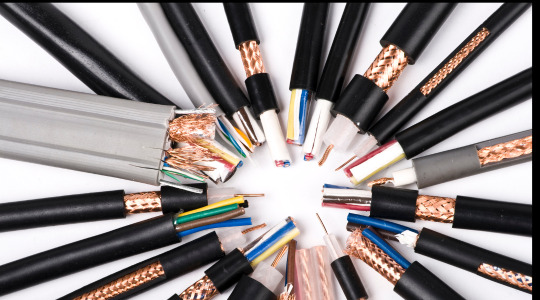#TotalPowerEnergy
Explore tagged Tumblr posts
Text
What are the Benefits of Electrical Safety?

Electricity is an integral part of our daily lives, yet it carries inherent risks if not managed responsibly.
Understanding and implementing electrical safety can transform our homes and workplaces into secure environments.
This blog delves into the numerous benefits of electrical safety, ensuring we all live and work in safer spaces.
Protecting Lives
First and foremost, electrical safety is about protecting lives. Each year, countless accidents related to electricity, such as electrocution and electrical fires, occur.
For instance, the Electrical Safety Foundation International (ESFI) reports that electrical malfunctions account for a significant number of home fires annually.
This stark reality underlines the importance of safety measures. Devices like Ground Fault Circuit Interrupters (GFCI) and circuit breakers are crucial in preventing such disasters. Beyond the physical, there's a mental aspect, too.
Knowing your home is equipped with safety measures brings a sense of peace and security, invaluable for mental well-being.
Saving Money
Practicing home electrical safety isn't just about avoiding accidents; it's also a financial strategy. Unsafe electrical practices can damage expensive appliances and electronics, leading to hefty repair or replacement costs.
Regular electrical inspection and maintenance can prevent such financial drains. Furthermore, insurance companies often offer benefits for homes with proven safety measures, adding another layer of cost-effectiveness to maintaining electrical safety.
Boosting Efficiency and Performance
An often-overlooked benefit of electrical safety is the enhanced efficiency and performance of electrical systems. A well-maintained electrical system minimizes energy waste, leading to potential savings on energy bills.
Moreover, it extends the lifespan of your equipment, ensuring that appliances perform optimally for longer. Thus, safe electrical practices are not just a protective measure but also an investment in efficiency.
Building a Safer Community
Electrical safety extends beyond individual homes and workplaces. By practicing safe electrical habits, we contribute to the overall safety of our community. For instance, reducing the risk of home fires eases the burden on firefighters and emergency services.
In workplaces, electrical safety is integral to preventing accidents and contributing to the overall well-being of workers.
Implementing Electrical Safety
So, how can you enhance electrical safety? Regular inspections by qualified electricians are a must. It's crucial to use proper equipment and avoid DIY repairs that might be unsafe. Educating your family, especially children, about the dangers of electricity and safe practices is essential.
Lastly, installing safety devices like surge protectors and ground fault circuit interrupters can significantly improve safety levels in your home and workplace.
Conclusion
To wrap up, the benefits of electrical safety are manifold. From safeguarding lives and saving money to boosting efficiency and building safer communities, the importance cannot be overstated. Everyone needs to prioritize electrical safety measures in their homes and workplaces electrical safety. Remember, an ounce of prevention is worth a pound of cure.
#ElectricalSafety#SafeElectricity#HomeSafety#ElectricianTips#SafetyFirst#ElectricalHealth#CircuitBreakerSafety#GFCIProtection#FireSafety#EnergyEfficiency#PreventElectricalHazards#SafeWiring#ElectricalInspection#TotalPowerEnergy#CommunitySafety
0 notes
Text
What are the 4 Main Types of Electrical Injuries?

Electricity, while indispensable in our daily lives, can also be a silent but deadly force. Its capacity to cause harm, often underestimated, can lead to serious, sometimes fatal, injuries.
This blog aims to highlight the importance of electrical safety and awareness. Today, we're diving into the four main types of electrical injuries, understanding their causes and symptoms, and, most importantly, how to prevent them.
Electrocution

Definition: Electrocution is a severe electrical injury caused by a significant electric current passing through the body. This intense experience can result in death or grave physical harm.
Causes: Common causes include direct contact with high-voltage sources, the use of faulty equipment, or inadequate grounding. These scenarios are more frequent than we think and can occur in everyday settings like homes, workplaces, or even outdoors.
Symptoms: The symptoms are immediate and alarming: loss of consciousness, intense muscle contractions, cardiac arrest, respiratory failure, and severe burns. These signs are a clear call for urgent medical attention.
Prevention: The key to preventing electrocution lies in respecting electricity's power. This means avoiding contact with high-voltage sources, ensuring proper grounding, and using safety equipment. Regular inspection and maintenance of electrical equipment are also non-negotiable.
For more in-depth information and practical tips on safeguarding yourself and your loved ones from electrical injuries, check out this resource: How To Prevent Electrical Hazards In The Workplace?
Electric Shock

Definition: An electric shock is a less severe form of electrical injury characterized by passing a smaller electric current through the body. However, it's still dangerous and can cause discomfort and injury.
Causes: Touching lower-voltage sources, such as household appliances or power cords, is a typical cause. Such incidents often result from a lack of awareness or safety measures.
Symptoms: The symptoms include tingling, numbness, muscle contractions, pain, difficulty breathing, and anxiety. These signs shouldn't be ignored, as they can indicate deeper issues.
Preventing electric shocks involves practical measures like using ground fault circuit interrupters (GFCIs), keeping electrical equipment away from water, and unplugging appliances before servicing.
Electrical Burns

Definition: Electrical burns are injuries caused by direct contact with electrical sources or the heat generated by sparks or arcs. They're a common and often overlooked consequence of electrical accidents.
Causes: These burns can result from direct contact with live wires, arc flashes, or electrical explosions. Such incidents often happen due to carelessness or a lack of protective measures.
Symptoms: The symptoms range from redness, swelling, and blistering to severe skin charring. In more severe cases, muscle and nerve damage can occur.
Prevention: Wearing protective clothing and gloves, avoiding overloading electrical outlets, and using proper wiring and insulation are effective ways to prevent electrical burns.
Trauma from Electrical Accidents

Definition: Trauma from electrical accidents refers to physical injuries caused by falls or other incidents related to electrical mishaps.
Causes: These injuries often stem from startled reactions, falls from ladders or scaffolding, or being struck by falling equipment during electrical work.
Symptoms: The symptoms include broken bones, bruises, cuts, and, in some cases, head injuries. These are serious injuries that require immediate medical attention.
Prevention: Using proper safety equipment, being aware of your surroundings, and avoiding working in hazardous conditions are crucial in preventing these types of injuries.
Conclusion
understanding the four main types of electrical injuries – electrocution, electric shock, electrical burns, and trauma from electrical accidents – is crucial for our safety. These injuries can have severe consequences, and their prevention hinges on awareness and proper safety practices.
#ElectricalSafety#SafetyFirst#ElectricalInjuries#PreventElectricalHazards#ElectricalAwareness#WorkplaceSafety#ElectricShockPrevention#TotalPowerEnergy#HealthAndSafety#SafeElectricity
0 notes
Text
Commercial Electrical Wiring Best Practices

Commercial electrical wiring is a crucial aspect of building infrastructure, ensuring safety and reliability in the workplace. It involves the intricate process of planning, installation, and maintenance to adhere to best practices in the industry. Understanding the significance and implementation of these practices is vital for creating a secure and efficient electrical system.
What is Commercial Electrical Wiring?
Commercial electrical wiring refers to the network of wires, cables, and components that supply power to a commercial building. This intricate system is responsible for providing electricity to lighting, heating, cooling, machinery, and a variety of other electrical devices essential for business operations.
Why are Commercial Electrical Wiring Best Practices Important?
Ensuring that your commercial electrical wiring adheres to best practices is of paramount importance for several reasons:
Safety: The safety of your employees, customers, and the building itself is the top priority. Proper wiring practices reduce the risk of electrical fires, shocks, and accidents.
Reliability: A well-designed and maintained electrical system minimizes downtime and operational disruptions, keeping your business running smoothly.
Compliance: Following best practices ensures that your electrical system complies with local building codes and regulations, preventing legal issues and potential fines.
Energy Efficiency: Efficient electrical systems can significantly reduce energy consumption and lower utility costs.
Who Should Follow Commercial Electrical Wiring Best Practices?
Everyone involved in the planning, installation, and maintenance of commercial electrical wiring should adhere to best practices. This includes building owners, property managers, electricians, and maintenance staff. It's a collective responsibility to maintain a safe and efficient electrical system.
Commercial Electrical Wiring Best Practices
Planning and Design
When it comes to commercial electrical wiring, meticulous planning and design are critical. Consider the following factors:
The Type and Size of the Building: Different types of buildings (office, industrial, retail) have unique electrical requirements. Size matters, too, as larger buildings demand more complex systems.
The Intended Use of the Building: The purpose of the building dictates the electrical load. For example, a manufacturing plant requires more power than a small retail store.
The Future Needs of the Building: Anticipate growth and evolving technological requirements. Plan for expansion without overhauling the entire system.
The Budget: Balancing quality with budget constraints is crucial. Cutting corners may lead to long-term issues.
Materials and Installation
Using high-quality materials and following proper installation practices are essential for a safe and efficient electrical system. Best practices include:
High-Quality Materials: Always use materials approved for commercial use. Quality materials ensure durability and safety.
Conduit Installation: Protect wiring from damage by using conduits. This safeguards your electrical system against physical harm.
Ground Fault Circuit Interrupters (GFCIs): Install GFCIs to protect individuals from electrical shocks in areas where water and electricity can mix, such as kitchens and bathrooms.
Arc Fault Circuit Interrupters (AFCIs): AFCIs detect electrical arcing that can lead to fires. Install them to enhance fire safety.
Safety
Safety should be at the forefront of all commercial electrical work. Ensure safety with the following precautions:
Power Shutdown: Always turn off the power before working on any part of the electrical system. Use lockout/tagout procedures when necessary.
Safety Gear: Wear appropriate safety gear, including gloves and eye protection, to protect yourself from electrical hazards.
Electrical Hazards: Be aware of the risks of electrical shock and arc flash. Following safety protocols is crucial.
Maintenance and Testing
Regular maintenance and testing keep your electrical system in optimal condition. Perform the following tasks:
Inspect for Damage: Regularly inspect the wiring for signs of wear, damage, or overheating. Address issues promptly.
Circuit Breaker Testing: Test the circuit breakers to ensure they trip correctly and provide overcurrent protection.
Smoke and Carbon Monoxide Detectors: Test smoke and carbon monoxide detectors regularly to ensure they function correctly.
Additional Tips
Here are some additional tips to keep your commercial electrical system in top shape:
Qualified Electrician: Always hire a qualified electrician for the design and installation of your electrical system.
Permits: Obtain all necessary permits before beginning any electrical work to avoid legal complications.
Clear Labeling: Clearly label all circuits and components for easy identification and troubleshooting.
Clean Electrical Panels: Keep the electrical panel clean and free of debris to prevent overheating and fire hazards.
Avoid Overloading Circuits: Do not overload circuits. Distribute electrical loads evenly to prevent overloads.
Prompt Action: If you encounter electrical problems or suspect an issue, don't hesitate to call an electrician immediately.
Conclusion
Adhering to commercial electrical wiring best practices is vital for the safety, reliability, and efficiency of your electrical system. Prioritizing safety, using high-quality materials, and following proper procedures during planning, installation, and maintenance will ensure that your commercial electrical system serves your business well.
If you have any questions or concerns about your commercial electrical system, do not hesitate to consult with a qualified electrician. Total Power Energy Services is here to assist you with all your commercial electrical needs. Our experts are ready to provide the highest level of service and expertise to keep your business powered and safe.
#CommercialElectrical#ElectricalSafety#WiringBestPractices#ElectricianTips#ElectricalStandards#SafetyFirst#EnergyEfficiency#ElectricalMaintenance#BusinessWiring#CommercialProperty#PowerUpSafely#TotalPowerEnergy#SafeAndReliable#BuildingSafety#ElectricityMatters#BusinessOperations#ElectricalInspection#BusinessSafetyTips#FutureProofWiring#ElectricalCompliance
0 notes
Text
Customizing your Lighting with Smart LED Strips

In this digital age, the way we light our homes and spaces has taken a significant leap forward. Smart LED strips have emerged as a game-changer in the world of lighting, offering versatility, control, and style. From accent lighting to mood enhancement, these ingenious strips are transforming the way we illuminate our surroundings. This article will delve into the world of smart LED strips, guiding you through the customization of your lighting setup.
What are Smart LED Strips?
Smart LED strips are a modern and flexible lighting solution that offers the ability to customize your lighting environment in numerous ways. These strips are equipped with smart technology, allowing you to control and adjust the lighting settings to match your preferences. Whether you want to create an inviting atmosphere or add a touch of drama, smart LED strips are up to the task.
The Growing Smart LED Strip Market
The smart LED strip market has been on a steady rise and is projected to reach an impressive $10.5 billion by 2027, according to a report by MarketsandMarkets. This exponential growth reflects the increasing demand for these innovative lighting solutions.
Why Smart LED Strips are Gaining Popularity
Smart LED strips have gained immense popularity due to their affordability, flexibility, and ease of use. They provide a level of customization that traditional lighting options can't match. Whether you're looking for a simple lighting solution or something more complex, smart LED strips can deliver.
Getting Started with Smart LED Strips
Installation and Setup
Getting started with smart LED strips is relatively easy. Most of these strips come with user-friendly instructions that guide you through the installation process. Here's a brief overview of what you need to do to set up your smart LED strips:
Unbox the smart LED strip kit.
Prepare the surface for installation.
Connect the LED strips and the controller.
Install the necessary mobile app on your smartphone.
Controlling Your Lighting with Smart LED Strips
Smartphone Apps and Voice Assistants
Smart LED strips are typically controlled using a dedicated smartphone app or voice assistants like Amazon Alexa or Google Assistant. This means you can adjust your lighting from anywhere within your home or even while you're away.
Customization Capabilities
Color, Brightness, and Patterns
One of the key attractions of smart LED strips is their customization capabilities. You can easily adjust the color, brightness, and lighting patterns to suit your mood, activity, or preference. Whether you want a warm, cozy glow for a movie night or a vibrant, dynamic display for a party, it's all at your fingertips.
Creating Complex Lighting Effects
Music Sync and Dynamic Lighting
Smart LED strips take customization to the next level by allowing you to synchronize your lighting with music or create dynamic lighting effects. Imagine your lights pulsating with the beat of your favorite songs or smoothly transitioning through various colors for a captivating visual experience.
Choosing the Right Smart LED Strips
Length, Color, and Brightness Considerations
When choosing smart LED strips, consider factors like the length of the strips, the color options, and the brightness levels. These choices will directly impact the ambiance you can create in your space.
Outdoor Applications
Water-Resistant Smart LED Strips
For outdoor applications, it's essential to choose water-resistant smart LED strips. These strips are designed to withstand the elements, making them perfect for outdoor installations. You can light up your patio, garden, or any outdoor area without worry.
Installation Techniques
Adhesive Tape vs. Mounting Clips
Smart LED strips can be installed using adhesive tape or mounting clips. Your choice will depend on the surface you're working with and your personal preferences. Adhesive tape is quick and easy, while mounting clips provide more stability.
Installation Guidelines
When installing smart LED strips, it's crucial to follow the manufacturer's instructions to ensure safe and efficient operation. Proper installation not only enhances the longevity of the strips but also prevents any mishaps.
Creative Applications of Smart LED Strips
Accent Lighting
Use smart LED strips to accentuate architectural features, such as crown molding, or to highlight backsplashes, creating a stunning visual impact.
Mood Lighting
Transform your home into a serene sanctuary or a party hotspot with mood lighting. Adjust the color and brightness to match your desired atmosphere.
Task Lighting
Smart LED strips are excellent for providing task lighting in your workshop or garage. Illuminate workspaces effectively and enhance productivity.
Gaming Lighting
Elevate your gaming experience with immersive lighting. Sync your smart LED strips with your gameplay for an intense and captivating environment.
Holiday Lighting
Whether it's Halloween, Christmas, or any other holiday, smart LED strips can create captivating lighting displays that set the mood for celebrations.
Smart LED Strips - A Versatile and Affordable Solution
Smart LED strips are a versatile and affordable way to customize lighting in your home. With a little creativity, you can use smart LED strips to create unique and eye-catching lighting effects.
Conclusion
In a world where lighting is more than just illumination, smart LED strips are taking center stage. They offer a myriad of options for customization, making it easier than ever to set the perfect ambiance in your space. Whether you're seeking functional task lighting or a magical mood enhancer, smart LED strips can do it all.
For expert lighting installation services, contact Total Power Energy and let us brighten up your world!
#SmartLEDStrips#CustomLighting#LightingSolutions#SmartHome#HomeLighting#InteriorDesign#Ambiance#TechInnovation#LightingEffects#DIYLighting#LightingInspiration#OutdoorLighting#MoodLighting#HomeImprovement#TotalPowerEnergy
0 notes
Text
How to Choose the Right Cable for Outdoor Lighting

When it comes to outdoor lighting, choosing the right cable is crucial. The cable you select can make a significant difference in the performance and safety of your outdoor lighting system.
In this comprehensive guide, we will walk you through the essential steps of selecting the perfect cable for your outdoor lighting project. We will cover everything from voltage and gauge to cable types and length. Let's shed some light on the intricacies of outdoor lighting cables.
Understanding Your Lighting System
Before diving into the world of cables, it's vital to have a clear understanding of your outdoor lighting system. Consider factors such as the number of fixtures, the distance between them, and the total wattage your system will consume.
Voltage Matters
Voltage: The starting point of your cable selection process is determining the voltage rating for your outdoor lighting system. In most cases, low-voltage lighting systems (12-24V) are the preferred choice for outdoor applications. They are safer and more straightforward to install compared to high-voltage systems.
Cable Gauge and Current Capacity
Gauge: The cable gauge plays a critical role in ensuring the efficient operation of your outdoor lighting system. The gauge determines the cable's current-carrying capacity. Be sure to choose a cable with a gauge that can handle the wattage of your lighting fixtures. For example, a 12-gauge cable can carry up to 20 amps, making it suitable for approximately 20 LED lights.
Types of Outdoor Lighting Cable

Types: There are two primary types of cable used for outdoor lighting: direct burial and non-direct burial.
Direct Burial Cable
Direct burial cable is designed to be buried underground, making it ideal for installations where the cable needs to be hidden. This type of cable is rugged and durable, with protection against moisture, soil, and physical damage.
Non-Direct Burial Cable
Non-direct burial cable is suitable for aboveground installations. It should not be buried in the ground and is typically used in scenarios where the cable is exposed.
Consider Cable Length
Length: Select a cable that is just the right length for your outdoor lighting project. It's essential to avoid using excessively long cables, as this can lead to voltage drops. The longer the cable, the more significant the voltage drop, which can result in dimmer lights and potential operational issues.
Weather Resistance
When choosing your outdoor lighting cable, consider the climate and weather conditions in your area. It's crucial to pick a cable that can withstand exposure to the elements, especially if it will be installed aboveground.
Outdoor Cable Protection
Make sure your outdoor lighting cable comes with adequate protection, such as UV resistance, moisture resistance, and durability against physical wear and tear.
Installation Guidelines
Adhering to the manufacturer's installation guidelines is essential. Follow the recommended installation practices to ensure the cable's longevity and safety.
For complex outdoor lighting projects, it's often a wise choice to hire professional electrical contractors. Experienced electricians can ensure that the cable selection and installation are done correctly, guaranteeing the longevity and safety of your outdoor lighting system.
Regular Maintenance
Remember that outdoor lighting systems require periodic maintenance. Inspect the cables, fixtures, and connections regularly to ensure everything remains in working order.
Conclusion
Choosing the right cable for your outdoor lighting project is crucial for ensuring safety, efficiency, and the overall effectiveness of your lighting system. Pay close attention to voltage, gauge, cable type, and length to guarantee a seamless and well-illuminated outdoor space. By following these guidelines, you can create an outdoor lighting system that not only enhances your property's appearance but also provides a secure and inviting environment.
#OutdoorLighting#LightingDesign#CableSelection#GardenIllumination#DIYLighting#SafetyFirst#VoltageMatters#GaugeSelection#IlluminateOutdoors#TotalPowerEnergy#CableGuide#GardenLights#LowVoltage#LightingSolutions#OutdoorDecor#EnergyEfficiency#HomeImprovement#LandscapeLighting#LightingTips#TotalPowerEnergyServices
0 notes